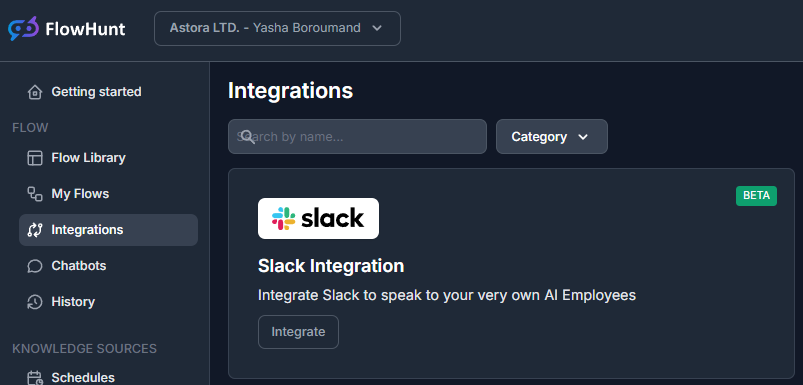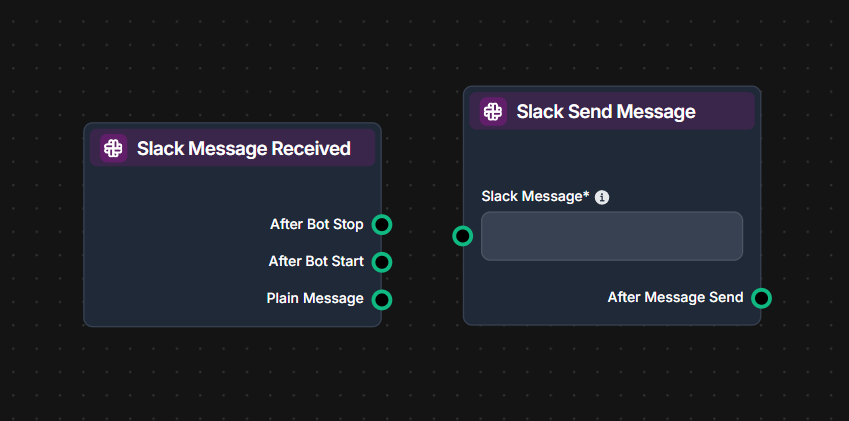Introduction to Slackbot
Slackbot is a key part of the Slack platform, acting like a virtual assistant that helps make operations smoother, improves communication, and increases productivity in work settings. It is a small software application within Slack’s large system that follows programmed commands to simplify and automate different workflow tasks. These bots can do many things, such as sending messages, files, and pictures, opening modals, providing emoji reactions, and alerting users about events. They also collect and analyze data, helping with efficient task management and communication.
Purpose and Role Within the Slack Platform
The main purpose of Slackbot is to be an automated tool that helps users complete tasks more effectively within Slack. Using Slack’s API, developers can create custom Slackbots for specific needs. These bots boost productivity by automating tasks like setting reminders, managing to-do lists, and storing information within the organization. Slackbots also integrate smoothly with other applications, allowing users to complete tasks without switching between platforms.
As a virtual assistant, Slackbot helps optimize workflow by reducing manual effort for routine tasks. It promotes a collaborative workspace by allowing team members to share information quickly and easily. In business settings, Slackbots are useful in marketing, sales, project management, providing support services, and processing orders directly through Slack.
Functions and Capabilities
Slackbot has many functions and capabilities, making it useful for a variety of applications. Here are some key features:
- Automation of Routine Tasks: Slackbots can automate repetitive tasks, freeing up time for more important activities. This includes sending reminders, managing tasks, and scheduling notifications.
- Integration with Third-Party Applications: Slackbot can work with many third-party tools, improving workflow by bringing external functions into Slack. This allows for real-time updates and easy data sharing between applications.
- Customizable Responses: Users can program Slackbots to give custom responses to specific triggers or commands. This is helpful for answering common questions or providing quick information to team members.
- Data Collection and Analysis: Slackbots can gather and analyze data from various sources, offering valuable insights and helping with decision-making. This approach allows organizations to track performance and improve efficiency.
- Support and Order Processing: In customer service roles, Slackbots can help with support services and order processing. By automating these interactions, businesses can respond faster and improve customer satisfaction.
Slackbot’s ability to perform these functions well makes it a valuable tool in both business and education. By learning to use Slackbot effectively, organizations can optimize operations, enhance communication, and boost productivity.

Source: August Benefits
Functions and Capabilities of Slackbot
Slackbot is a key part of the Slack platform, acting as a helpful virtual assistant to boost productivity and simplify communication in workspaces. This section explores what Slackbot can do, focusing on how it automates tasks and helps with effective communication.
Slackbot as a Virtual Assistant
Slackbot mainly works as a virtual assistant within Slack. It’s set up to handle various automated tasks, which cuts down the time and effort spent on daily activities. This lets you concentrate on more important work, increasing productivity. You can set Slackbot to send reminders, notifications, and customized replies, which helps keep work moving smoothly and makes sure important tasks and deadlines aren’t missed.
Automation and Task Management
A key feature of Slackbot is automating repetitive tasks. It can send automated messages and reminders to people or groups at specific times, repeating if needed. This is especially useful for managing team tasks and keeping everyone on track with project schedules. By automating these messages, Slackbot reduces mistakes and ensures tasks are finished on time.
Enhancing Communication
Slackbot improves team communication. It alerts users when someone mentions them in channels they don’t usually follow, so they don’t miss important talks. It also informs members when a channel is archived, keeping everyone updated on communication status. This function maintains transparency and keeps all team members in the loop.
Custom Responses
Creating custom responses with Slackbot is a standout feature. You can set up automated answers that activate with certain keywords or phrases. This is useful for quickly answering common questions and adding a personal touch to team chats. Custom responses can include text, emojis, or image links, making communication more creative.
Integration with Workflow
Slackbot enhances its usefulness by integrating with other tools and applications. It connects smoothly with third-party tools, helping teams streamline workflows without constantly switching apps. This feature is important for teams using various tools for project management, customer support, and other key business tasks.
Common Uses of Slackbot: Customer Support
Enhancing Efficiency in Customer Support
Slackbot is being used more and more in customer support to boost efficiency and speed up response times. It automates routine questions and delivers quick answers to frequently asked questions, cutting down the workload for human agents. This allows them to concentrate on more complex customer issues that need personal attention.
Automated Query Handling
Slackbot improves customer support mainly through automated query handling. It uses natural language processing and AI-driven workflows to understand and reply to customer questions accurately. For example, as shown in a Vellum AI case study, Slackbot can search through indexed documents and past Q&A pairs stored in a vector database. This lets it deliver the most relevant answers and cite sources to ensure transparency.
Real-time Monitoring and Updates
Slackbot actively monitors customer interactions as they happen. By tracking specific channels, it logs user questions and their answers when tagged with certain emojis. This process keeps new queries documented for future use, constantly updating the knowledge base. Over time, Slackbot becomes more efficient, offering quicker and more precise answers to common questions.
Integration with Existing Systems
To get the most out of Slackbot in customer support, it can connect with tools and platforms like Airtable and Zapier. This integration helps smoothly record customer interactions and update support documentation. By using Zaps to track questions and answers, Slackbot ensures information flows seamlessly between different systems, boosting operational efficiency.
Benefits of Slackbot in Customer Support
Using Slackbot in customer support brings several advantages:
- Reduced Response Time: Slackbot handles routine questions, cutting down the wait time for customers and enhancing satisfaction.
- Consistent Service Quality: Automated replies ensure customers receive accurate and consistent information, reducing the chance of human error.
- Scalability: Slackbot allows support teams to expand operations without needing more human resources, making it cost-effective for growing businesses.
- Data-driven Insights: Logging and analyzing customer interactions continuously provide insights into common issues and areas for service improvement.
In conclusion, adding Slackbot to customer support systems boosts efficiency and service quality. It automates routine tasks and integrates smoothly with other tools, allowing support teams to focus on solving complex issues, which leads to better customer satisfaction and loyalty.
How FlowHunt Integrates Slackbot
Flowhunt.io now offers seamless Slack integration, allowing you to leverage AI-powered Slackbots tailored to serve diverse purposes. By integrating Slack with Flowhunt, you can create interactive AI workflows that respond directly to Slack messages.
How It Works:
Slack Integration Setup:
- Navigate to the Integrations section within Flowhunt and enable Slack Integration (currently in beta).
- Once integrated, the AI employees in Flowhunt can interact with users directly within Slack channels.

Custom Flows for Slack:
- Use Flowhunt’s drag-and-drop editor to design flows specifically for Slack.
- For example, the Slack Message Received block listens for user input in Slack, and the Slack Send Message block allows the AI to send automated, tailored responses based on your flow logic.

Versatile Use Cases:
- Slackbots created with Flowhunt can handle customer support, internal team queries, automated task management, or even complex decision-making, depending on the integrated flow.
By combining Slack’s communication power with Flowhunt’s advanced AI workflows, you can streamline interactions and automate repetitive tasks, boosting team efficiency and customer satisfaction.
By combining Flowhunt.io with Slack, you unlock a powerful synergy that streamlines communication, automates workflows, and boosts productivity. Flowhunt’s AI-powered Slackbots adapt to your unique needs, whether it’s automating team processes, managing customer interactions, or providing instant, intelligent responses. This integration transforms Slack from just a communication tool into a dynamic, AI-enhanced workspace, enabling your team to focus on what truly matters while the bots handle the rest. If efficiency and innovation are your priorities, integrating Flowhunt with Slack is a game-changer.




